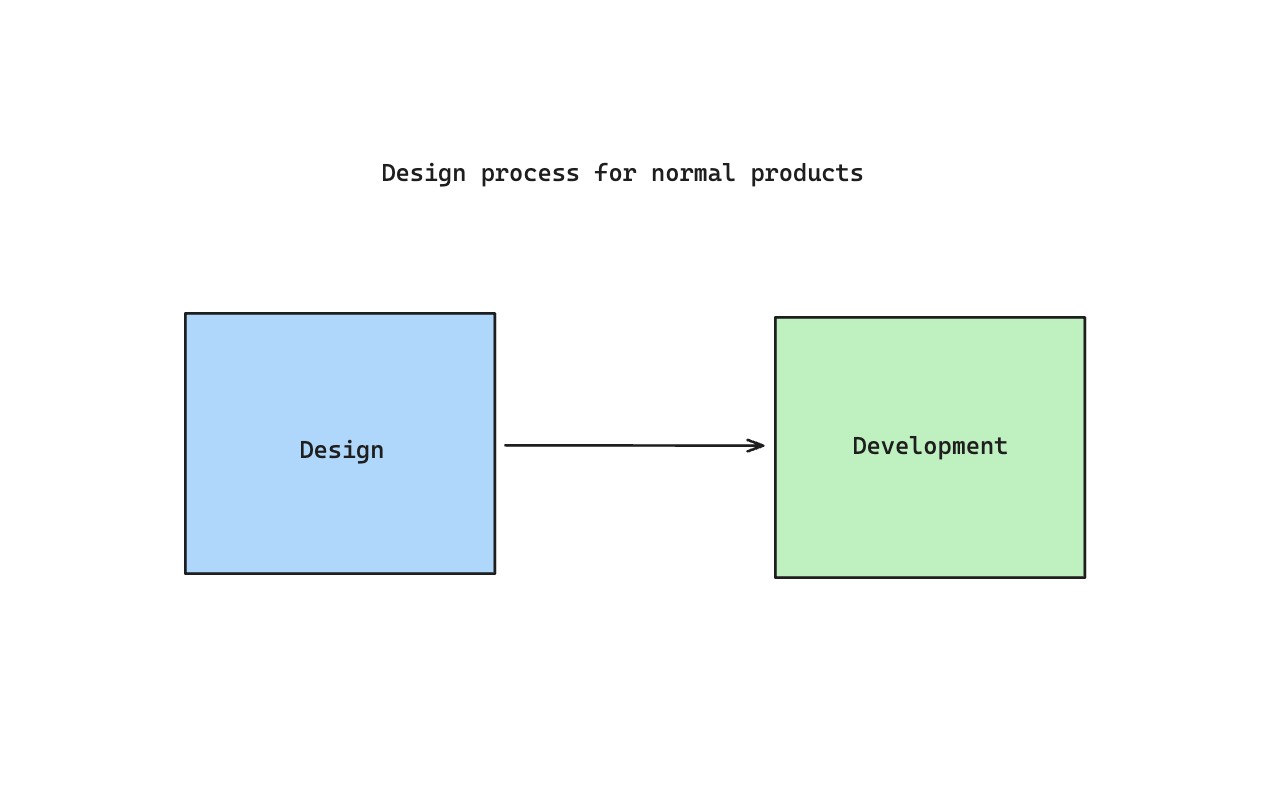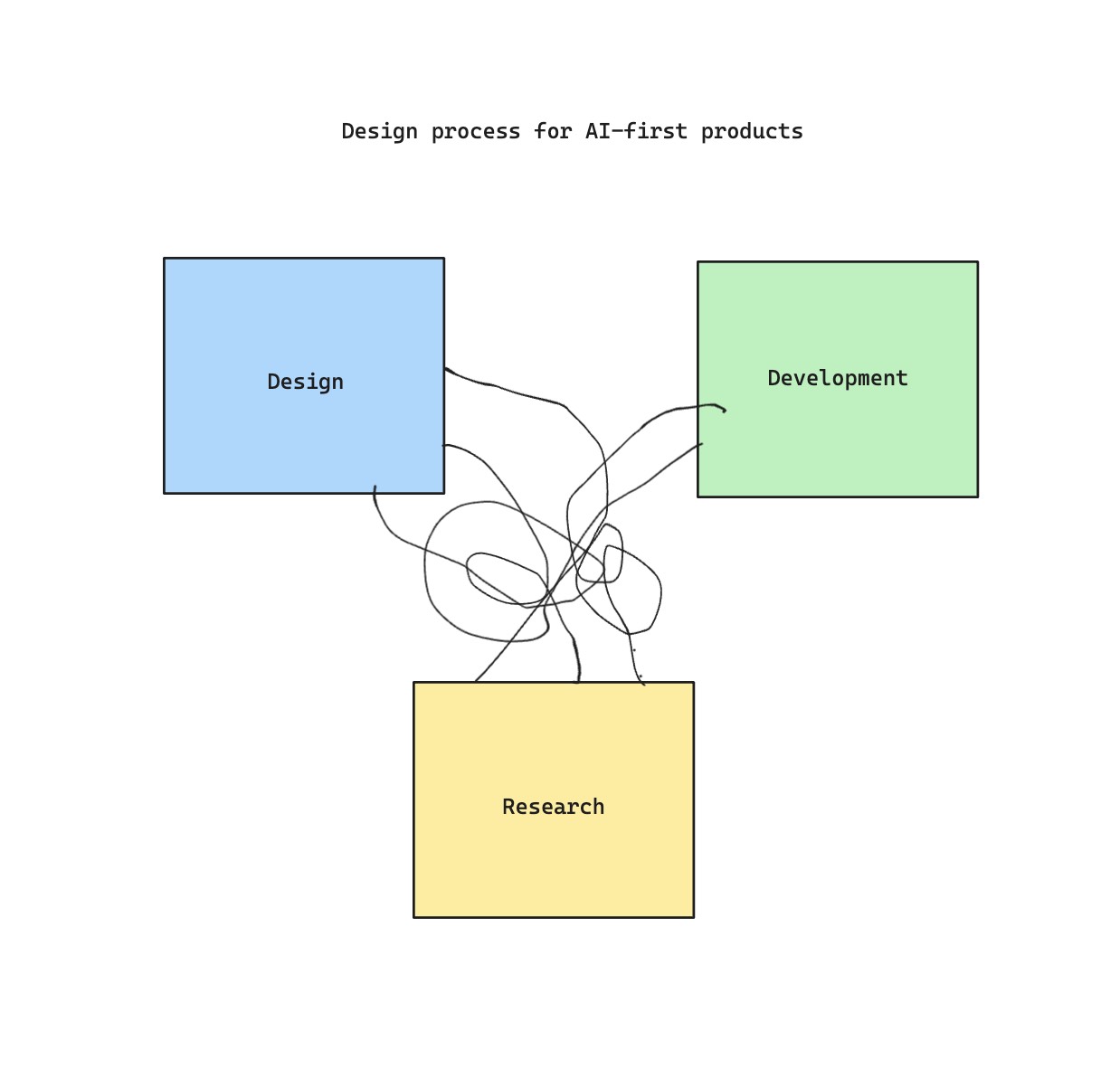The Foundational Shift in AI Product Design
The best AI products I've seen aren't the ones with perfect designs handed to engineering. They're born from a messy, iterative dance between what's beautiful and what's possible. Traditional design assumptions will kill your AI-first product before it launches.
In the pre-LLM era, we treated design like assembly-line manufacturing:

- Designers conducted sterile user research, divorced from technical constraints
- Pixel-perfect mockups cascaded through approval chains
- Developers inherited precise specifications to implement
This approach doesn't just fail for AI products—it fails spectacularly. The gap between what designers envision and what LLMs can deliver is often an unbridgeable chasm. Here's what actually works:

The winning formula isn't a process—it's a trinity: design, development, and LLM research. That last piece is where most teams stumble. They underestimate how much time they'll spend wrestling with prompts, temperature settings, and token limits until the model actually behaves as needed.
Think of it like jazz improvisation rather than classical composition. You might start with a clean design in Figma, but within hours you'll discover your elegant interface crumbles when the LLM hallucinates, runs too slow, or outputs garbage 80% of the time. The real work begins when theory meets reality.
Case in point: A startup I know spent three months designing an AI flight assistant. Beautiful UI, flawless flows, incredible user testing. Launch day? The LLM confused layovers with direct flights, invented airports that don't exist, and couldn't handle time zones. Their recovery strategy? Pivot to a 1000-iteration prompt engineering sprint, while simultaneously redesigning every interface to account for uncertainty markers, confidence scores, and graceful fallbacks.
The solution demands a cultural shift. Your researchers need to sit beside designers, not in a separate room. Your prompt engineers must understand user psychology. Your designers should know the difference between zero-shot and few-shot learning. The dream is one person who embodies all three skills— but that's rarer than a unicorn with a CS degree.
Every "brilliant" design innovation must survive the harsh reality of LLM limitations. "Wouldn't it be cool if the AI could..." starts a hundred meetings, but only those that pass the feasibility gauntlet make it to production. The process isn't a clean flowchart—it's more like quantum entanglement where touching one element instantly affects all others.
The teams that win aren't the ones with the best designers or the smartest engineers or the most advanced models. They're the ones that collapse the walls between disciplines. Run daily standups with designers, engineers, and AI researchers in the same room. Prototype with real LLMs, not mock data. Fail fast, pivot faster, and never ship an AI feature without stress-testing it against the weird, messy, unexpected ways humans actually use products.
The Painful Realities Nobody Tells You
Making this shift will hurt. Here's why:
- Everyone is a specialist: Your designers can't read JSON outputs. Your engineers don't know what "above the fold" means. Your AI researchers think UI stands for "Unnecessary Interface." Throw them in a room together and watch the sparks fly.
- Time estimates are lies: That two-week sprint will become two months of prompt engineering purgatory. Your PM's Gantt chart looks like abstract art. Learn to embrace the chaos timeline.
- Features die daily: That revolutionary AI-powered feature everyone loved? It works 40% of the time. Get comfortable killing your darlings, or better yet, scaling them back to what actually works consistently.
The Industry-Wide Earthquake
This isn't just about your product team—it's a tectonic shift in tech:
- The org chart is dead: Hierarchical design teams? That's 2019 thinking. The future belongs to hybrid squads where designers write prompts, engineers conduct user research, and AI specialists obsess over microinteractions.
- Design schools are obsolete: Teaching Figma without teaching prompt engineering is like teaching filmmaking without cameras. The next generation needs to understand both pixels and parameters, both wireframes and weight matrices.
- Ethics becomes core: Every design decision cascades through training data biases, output hallucinations, and privacy implications. The line between UX designer and ethics consultant blurs by the day.
The companies that survive this transition won't just adapt their processes— they'll reinvent their DNA. Those still shipping waterfall-designed AI features in 2025 will be as relevant as companies shipping Flash websites in 2015. The future belongs to the interdisciplinary, the flexible, and the radically collaborative.